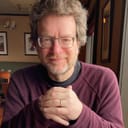Stay in the Loop
BSR publishes on a weekly schedule, with an email newsletter every Wednesday and Thursday morning. There’s no paywall, and subscribing is always free.
The curvature of the earth
Building bridges, building music, and the jumps we make together

Sports, sports numbers, and sports records consumed my attention in my youth, I’ll admit. If I’d known I’d be going into music in a few years, I would’ve applied myself more assiduously in that direction, but knowing the shorthanded-kill percentage of the Flyers seemed more critical to my understanding of the world at the time.
Life has a way of laughing, though. The joke on me is that I can’t even remember Terry Crisp’s number now, and he was my favorite Flyer.
The long jump
When Bob Beamon broke the long-jump record by almost two feet in Mexico City in 1968, I watched it wide-eyed on TV, elbows on the living-room floor. From 27 feet and something to 29-something, it was like breaking the 4-minute mile by a half-minute in one race. I became a long jumper that day.
But while I remember my personal best (20 feet and one inch, since you were wondering; I was just good enough to be second-best at Pennsauken High School, George Mitchell being by far the better jumper, sprinter, and hurdler), to this day I can’t remember Beamon’s exact number without looking it up (there: It’s 29 feet, two and a half inches).
World-record wordsmiths
However, there’s another long span that means even more to me. It isn’t the number or even the record that sticks. It’s the description of it, which I read in the Guinness Book of World Records. I had my own copy, yes I did, purchased from the five-and-ten at Park and Central in Merchantville.
The Verrazzano-Narrows Bridge was the longest suspension bridge in the world when it was built in 1964. It is so long that its two supports are one and five-eighths of an inch out of parallel with each other, “to allow for the curvature of the earth.”
“To allow for the curvature of the earth” is one of the most beautiful assemblages of words ever cobbled together. I don’t know if Guinness invented it, or the New York bridge authorities, or if it’s boilerplate among mechanical engineers. I once asked my great-uncle Al Gersitz, who helped build the Walt Whitman, about it. A smile, small and beneficent, creased his face. “Oh, yes,” he said.
I smiled and said the same thing to a friend who told me after a choir rehearsal that it seemed to him that every part in Bach, not just the soprano part, was its own tune. “Oh, yes,” I said, like Uncle Al.

Singing and singing along
The tune or melody or line or whatever you want to call it is what sings. Sometimes it isn’t recognizable, like a tune, but it will still move, and you’ll hear it, and you’ll follow it. If you’re following it, you’re singing it. The composer sings something onto the page. If it is clear, the performer sings it out loud. If that is clear, the listener sings along.
Music is nothing but singing and singing along.
There are rules we’ve invented for all this, composer and performer rules, but that’s all music is. There are forms we talk about but there is no such thing as form, not really. There is only music, and if you follow the music, you sing the music. If you sing it all the way to the end, the form is perfect.
It isn’t that the rules are wrong. It’s that there are other rules, deeper rules. I think of those rules as the curvature of the earth.
Bridge rules exist only for one reason: to carry cars from one end to the other and keep them out of the water. A bridge carries people to their homes. Music carries people to the composer. That’s the only reason to have music rules.
Where we all meet
It isn’t about form, or rules, or virtuosity, or even beauty of tone. The secret of music is two people meeting each other. Victorian poet Gerard Manley Hopkins wrote about it in “Henry Purcell,” honoring the 17th-century English composer:
It is the forgèd feature finds me; it is the rehearsal
Of own, of abrupt self there so thrusts on, so throngs the ear.
Hopkins meets Purcell himself, Purcell’s feature, in his music. It isn’t a tune or an emotion or even meaning, but Purcell’s “own” abrupt self that strikes Hopkins.
There is no form, measure and codify music as we may. There are no chords, there aren’t any meters, there is just music. There is only singing, and singing along, and success in composing music, as in building bridges, means allowing for the curvature of the earth.
Fifty years ago, Bob Beamon flew away on a bridge of air, away from the takeoff board, away from judges, away from tape measures, away from a boy following with wide eyes, away from understanding, away, for a moment, even from himself. The earth curved underneath and received him back, and we gasped and became a part of him. I became a long jumper that day. We all became long jumpers that day.
Sign up for our newsletter
All of the week's new articles, all in one place. Sign up for the free weekly BSR newsletters, and don't miss a conversation.

 Kile Smith
Kile Smith
 Illustration by Hannah Kaplan
Illustration by Hannah Kaplan